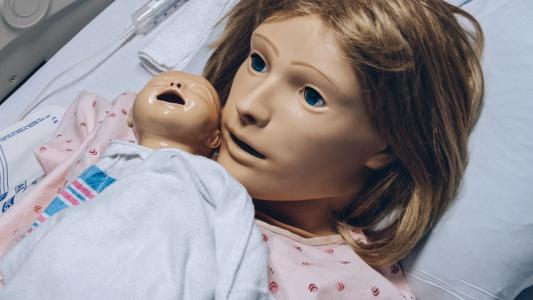For MIT computer scientist Adam Yala, improving breast cancer screening had a personal motivation.
Yala’s academic mentor, Regina Barzilay, had a bout with breast cancer in 2014. The experience gave a glimpse into the subjective side of the healthcare system and how much work needed to be done to improve breast cancer screening. For many patients, their ability to receive effective pre-cancer screening varies based on where they live and who their doctor is.
Yala wanted to standardize this experience for patients everywhere. He put his computer science training to good use and — together with Barzilay and their team from MIT and Massachusetts General Hospital (MGH) — created a deep learning algorithm designed to predict whether or not a patient will develop breast cancer within the next five years.
Traditional Predictive Models are Flawed
Discovering early signs of breast cancer in women improves the odds of survival, but the methods for deciding who to screen are fuzzy. Traditional predictive models, based on broad demographic factors, accurately place patients in the highest-risk category at an 18% success rate; the MIT/MGH team has radically improved on that, predicting risk accurately in 31% of cases.
Why the difference in accuracy?
Traditional risk models are based on surface-level information, such as age and family history. While these models are certainly better than nothing, they miss really important information in a majority of the cases.
Current screening guidelines simply suggest more regular exams based on the patient’s age. Doctors normally recommend biannual mammograms at age 40 or 50, because breast cancer risk increases with age. This is painting with too broad a brush, Yala says.
“What is age, really?” Yala says. “It’s just a weak risk marker.” Other weak risk markers in current models include breast density, family history, and a patient’s hormones.
MIT’s machine learning model is able to look past these weak predictors because it is based on mammograms of actual patients, recognizing patterns that are invisible to humans.
“Given a large amount of data, there might be some subtle signal that humans are overlooking,” says Kun-Hsing Yu, a biomedical informatics instructor at Harvard Medical School. “And give a machine a lot of data, we can tease out those hidden associations.”
MIT’s model is able to spot those extremely early signs of cancer before a human eye is able to, thanks to big data and machine learning. The model used 60,000 mammograms — from patients whose outcome, cancer or not, was already known — to pick out small trends in the images that correctly predict if the patient would get breast cancer.
When tested with black and white patients at MGH, the results were very promising for both cohorts, finding early signs of breast cancer in women up to five years in advance that humans could not see.
This could not only lead to more accurate screenings, giving patients more accurate readings of their individual mammograms, but also better screening guidelines, by helping doctors target screenings on those with the highest risk.
Improving Breast Cancer Screening Around the World
The next step is to refine and validate the model on other patient populations. Yala says that the current iteration of the model is much more accurate than it was before, but it needs to work that well for everyone. There is no guarantee the model can predict outcomes as accurately for different races or in other parts of the world.
“Cancer is a global problem,” Yala says. “We want to do this at scale, across the world.” The team at MIT is working hard to make their model accurate for every race and ethnicity.
The model has already performed well with patient data from a hospital in Sweden, and plans are being made to test it with data from other hospitals around the world. But medical data is sensitive, and ensuring the data is used responsibly is paramount — a challenge made even more difficult when working across various healthcare providers, systems, and countries.
However, with vast troves of human-validated clinical data, the potential for machine learning to change the future of medicine is high, Barzilay says. “If you think about it, the whole calling of medicine is all about prediction.”
“I’m very grateful that I had a chance to work on this topic and try to make a difference,” Barzilay says. “I think all of us, when we go through some upsetting experience, really want to take something out of it and help others.”






